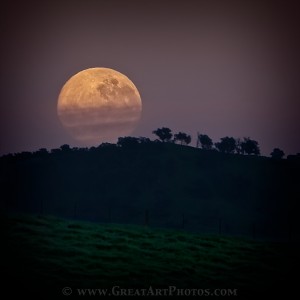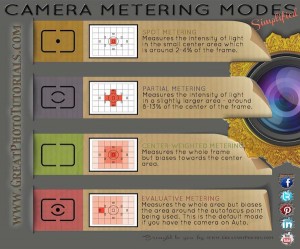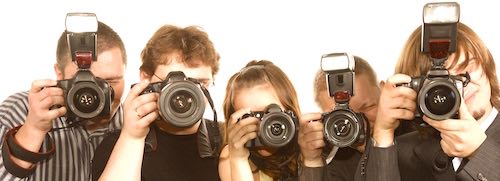There are thousands of articles full of tips and tricks and techniques to guide you to taking better photos, and it can all get very confusing, too technical, and overwhelming. That’s why I like to break it down to what I believe to be the 4 key points to handle first. Focus on them one at a time before going deeper into the art of photography and your results will be surprising.
1 Camera Control - Getting off Auto
I totally understand the fear and confusion of moving away from Auto Mode - I was there too once. (If your camera is basic and you don’t have an option to change the exposure settings, you'll be at a disadvantage here but you can still fine tune your camera skills with the other 3 points).
2 Tack Sharp Photos
You notice it straight away don’t you! Never show off your out of focus shots - never! (Unless that soft fuzzy blur was intentional). A little bit of attention here goes a long way.
3 Composition
Some people are just natural born artists but basic composition can also be learned! You want the eye to stay on the image, to hold your attention - "Pleasing to the eye"
4 Post Processing
Did you know that no pro photo is unedited!! (99.9% anyway). The camera actually doesn’t see things as our eye does…and that’s just one reason to edit your photos.
So lets get down the the nitty gritty
1 Camera Control - Getting off Auto
You’ll need to be able to change your exposure modes from Auto, to Av/A, TV/S, or M. If you have a smaller advanced point and shoot camera without these options on the dial, then you may find these options somewhere in your menu settings.
have a smaller advanced point and shoot camera without these options on the dial, then you may find these options somewhere in your menu settings.
The 3 primary settings you need to get a handle on before anything else are the Aperture, Shutter Speed, and ISO - the “exposure triangle”. These settings only become available when you take the camera off auto. I recommend that you switch over to Aperture Priority as a starting point.
A correctly exposed image depends on the amount of light that reaches the sensor. Too much and the image will be over exposed (too light), too little and it will be under-exposed (too dark). The Aperture and Shutter Speed both control how much light reaches the sensor. When you have more of one, you’ll need less of the other.
 The ISO controls the sensitivity of the sensor (how much light it needs to record the image) so you can see how these three settings area all interconnected.
The ISO controls the sensitivity of the sensor (how much light it needs to record the image) so you can see how these three settings area all interconnected.
Auto mode does not know what you are taking a photo of. It does not know if it is a landscape, a portrait, a sports field, a flower...It only knows if there is a lot of light or not a lot of light.
Why we take control theses settings:
Aperture - for depth of field - shallow DOF for those soft blurry backgrounds that make you subject ‘pop’, or deep DOF so that the landscape is sharp and clear from the flowers in the foreground to the distant hills.
Shutter Speed - fast for freezing motion in sports and action photography or slow for creating intentional blur like those dreamy waterfalls.
ISO - bump it up and you’ll keep the shutter speed faster which is perfect for fast action shots or to take better photos in low light - but there is a consequence - and that is that the photo gets ‘grainy’. In some instances a tripod would be a better option.
2 Tack Sharp Photos
We all have this issue from time to time - unwanted blur! I’ve taken theses tips straight out of our online course Photography Basics.
- Familiarise yourself with your camera’s Auto Focus options so you know what the camera can do.
- Switch off Auto Focus and get good at focussing manually - practice - you’ll need it at times.
- Check your posture - stand firm and straight on your feet.
- Use a camera support if your Shutter Speed is under 1/60th of a second.
- Use a tripod, and use the 10 second timer or a remote shutter release so you are not
 moving the camera accidentally while pressing the shutter button.
moving the camera accidentally while pressing the shutter button.
- Find your camera’s ‘sweet spot’ or at least stay away from the lowest and highest f/stops on the lens. Also avoid the maximum and minimum focal lengths of your zoom lenses.
- Keep your ISO low.
- If you are buying lenses, go for the best quality you can afford - they are worth saving for - really!
- Keep your lenses and filters clean.
- Check your photos in the preview - zoom right in and check for sharpness - don’t wait till you see it on your computer screen - it’s often too late to redo the shot by then!
Note: You cannot fix an out of focus or blurry image in post processing, but adding slight sharpening to a good pic always makes it look extra good.
3 Composition
How do you create drama and interest in your images in a way that sets them apart from everybody else’s?
A good start here is to spend time looking at photos that you find appealing. Google some image galleries and notice what stands out in the photos you like best. Is it the lines, colour, contrast, texture, repetition, movement, space, balance?
Over time you will probably develop your own personal style but it helps to borrow some inspiration from the pros temporarily…so get some ideas and go out and experiment…notice when you are working with lines, colour, contrast, texture, repetition, movement, space, balance.
4 Post Processing
All image and editing software and apps being different it is hard to give any step by step directions here but there are a few basic standard tweaks that most of us do on just about every image at a minimum.
- Sharpening
- White Balance
- Colour Saturation/Vibrancy
- Highlights and Shadows
- Spot Removal
Most importantly here is to not be heavy handed with your edits - unless you are intentionally looking for a more artistic outcome.
Check out our photo editing App recommendations here: https://greatphototutorials.com/p/photo-editing
One last tip. (no.5)
Sometimes there is just no getting a great shot in the available conditions! In other words, sometimes it’s not worth getting the camera out of the bag…it may be to bright, too dark, too hazy, to crowded…Notice the surroundings, the light, and the conditions before wasting time and getting disappointed - The camera sees objectively, we see subjectively. We see the stunning mountains…the camera sees the distant mountains and all the haze in front of them (we’ve all taken that shot!).
This is just a few snippets from the full course Photography Basics - check it out here:
















